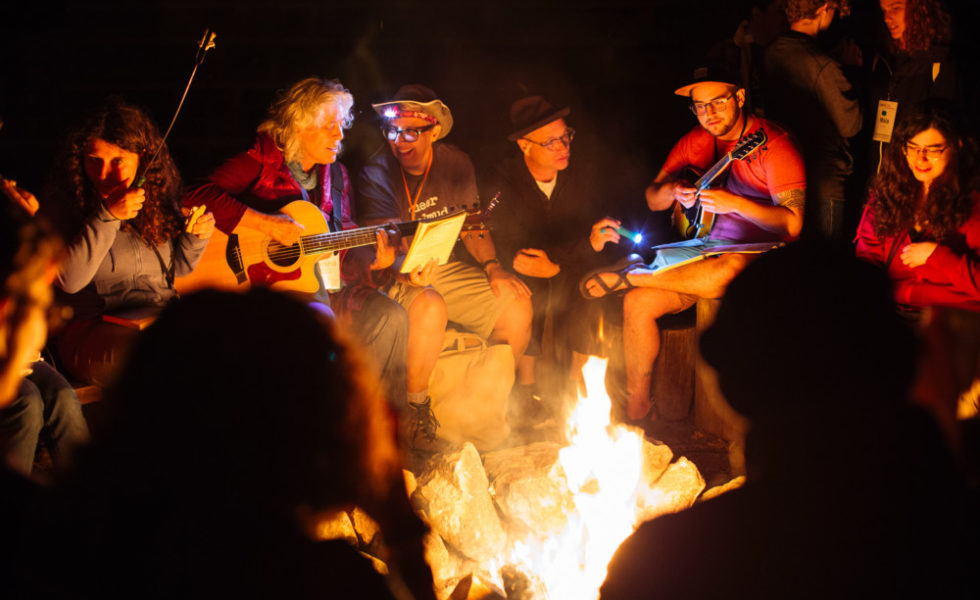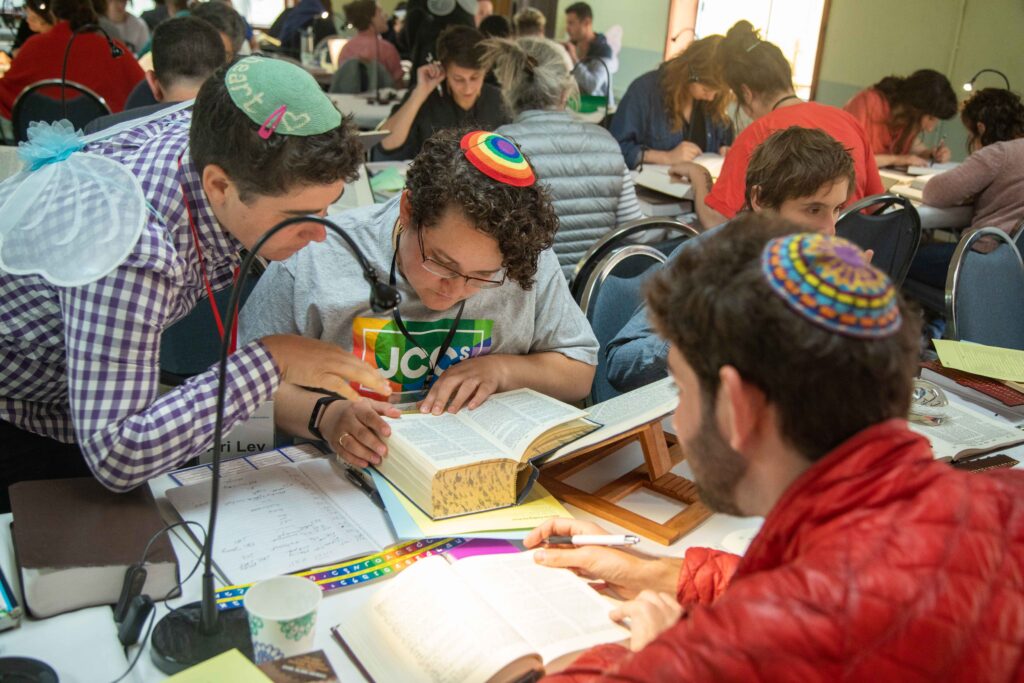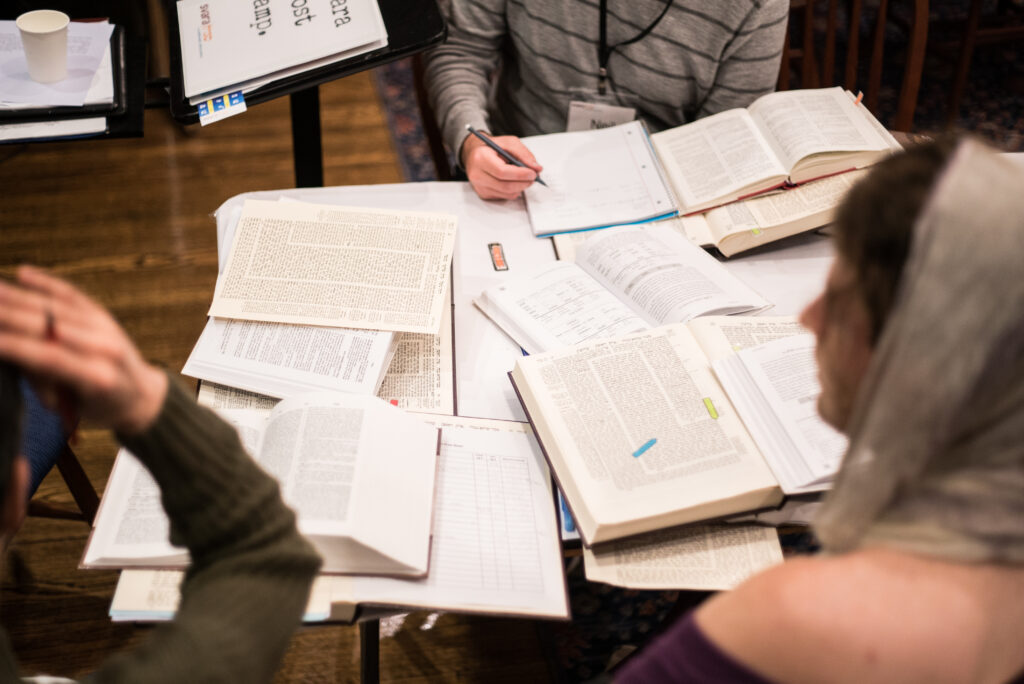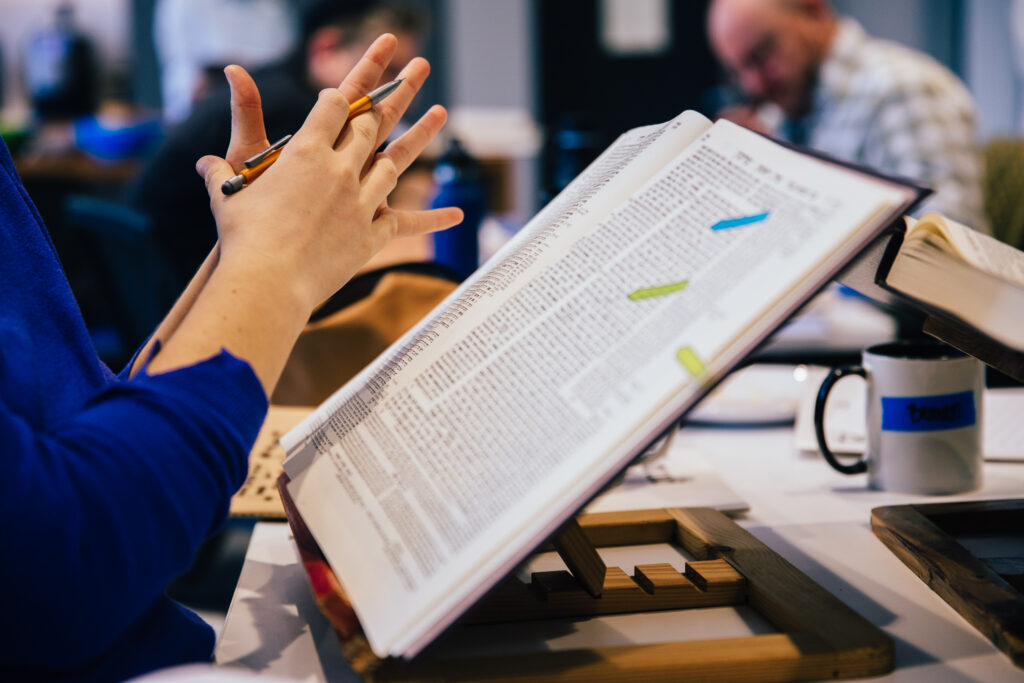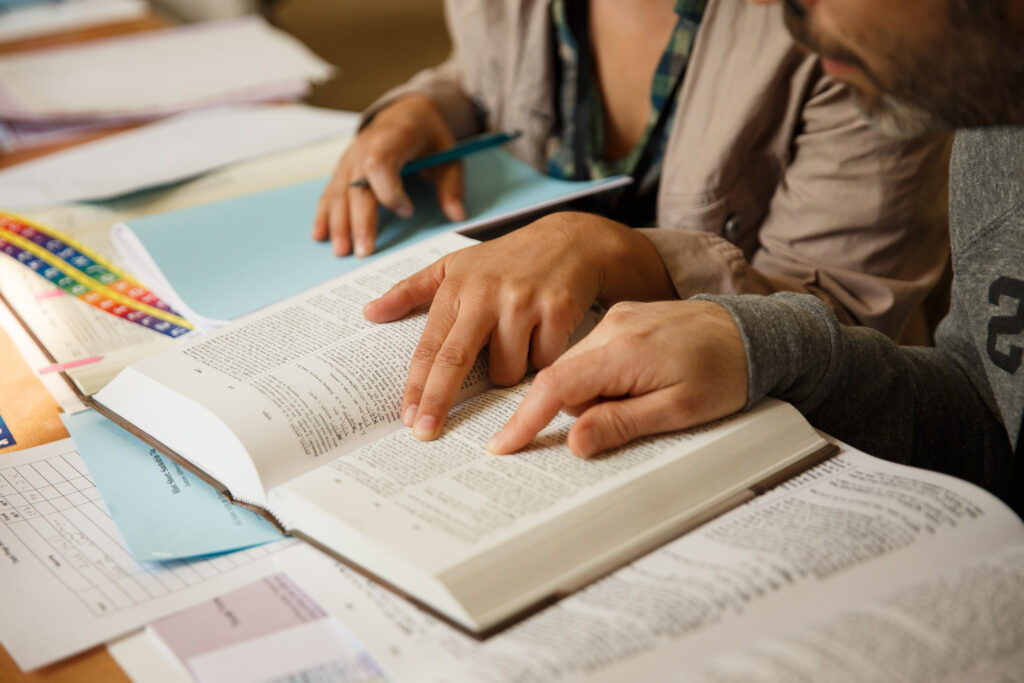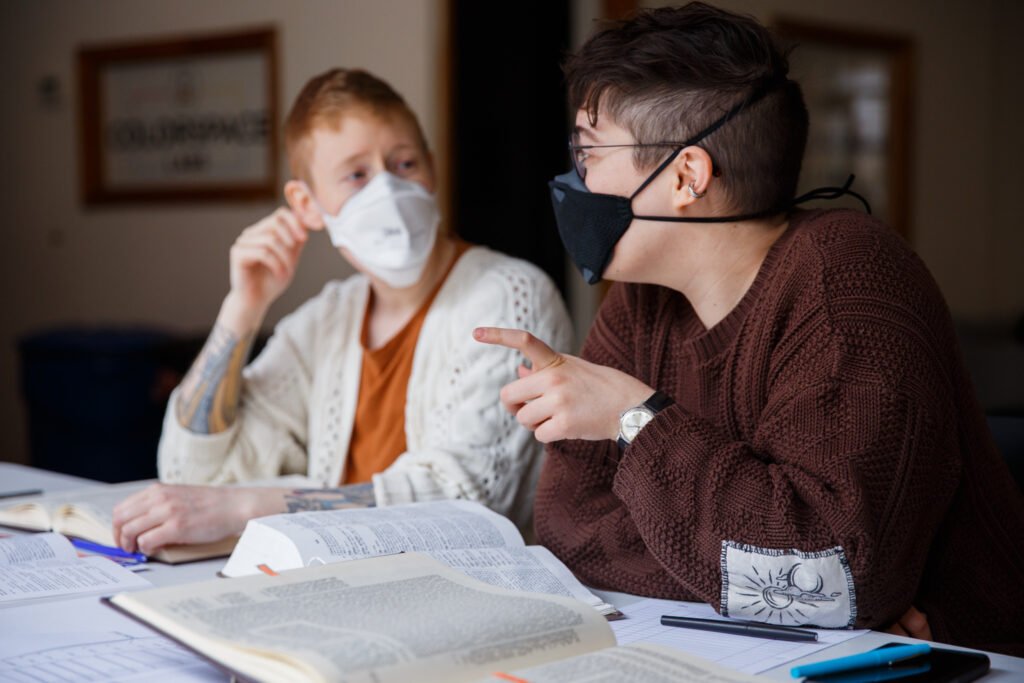This week, I’ve heard the inauguration of President Biden and Vice President Harris described in several ways: as a new page for our country, a win for activists, a peaceful transfer of power, a repudiation of the white nationalism and white supremacy, a win for democracy, a day of firsts, a new beginning. The one that feels the most true to me is that the inauguration was a beginning.
Two weeks ago, as the Jewish community began reading the book of Shemot in our annual Torah reading cycle, I had my own beginning. As I shared on Twitter, I straight up missed the book of Bereshit and was (re)starting my weekly Torah study with Shemot. I shared four books that were my “comfort Torah,” books that speak to my journey of coming to love Torah and to find myself in our holy texts. By framing this as a beginning, I was both letting go of the absence of Torah thus far in 5781 and grounding myself deeply in my own story of Torah as central to my own spiritual well being.
This is part of how beginnings function. They create a foundation from which the rest of a story will unfold, often negating or erasing what has come before. And yet, my new beginning with Parashat Shemot was deeply grounded in the beginning of my Torah study, my own identity, and my own growth. It was a beginning embedded within an already unfolding story.
Torah presents its own embedded beginnings. Take, for example, the creation story. In Bereshit 1:1, we read “In the beginning, Gd created the heavens and the earth.” Gd’s action is centered in the text. Whereas in 2:4, we read “These are the generations of heaven and earth when they were created,” centering the physical environment in which the rest of creation will unfold. Rashi reads “these are the generations” as referring back to the first creation story, embedding the second story within it.
The beginning of Shemot follows a similar pattern, opening with the names of the children of Israel that came to Egypt. This framing focuses us momentarily backwards to the generations who brought us to this point. Further, the language of Shemot at times mirrors the language of the creation story. All beginnings start from somewhere, and we encounter any beginning as people formed by those who came before us. While the Torah begins to tell the story of formation as a people, it can not do so without tying our existence to the creation of the world and the individuals who started the Israelite community.
Another paradigm for beginnings comes from Masechet Berakhot. Mishnah Berakhot 1:1 begins with the question “From when do we recite the Sh’ma in the evening?” In other words, when can we begin to fulfill this ritual obligation? The Mishnah answers in a fairly straightforward manner, from the time when the priests enter to partake of their dedicated meal, and then moves on to address the question of when the ritual window of time ends. The Talmud (Berakhot 2b) provides other possible answers.
מֵאֵימָתַי מַתְחִילִין לִקְרוֹת שְׁמַע בָּעֲרָבִין — מִשָּׁעָה שֶׁקָּדַשׁ הַיּוֹם בְּעַרְבֵי שַׁבָּתוֹת, דִּבְרֵי רַבִּי אֱלִיעֶזֶר. רַבִּי יְהוֹשֻׁעַ אוֹמֵר: מִשָּׁעָה שֶׁהַכֹּהֲנִים מְטוֹהָרִים לֶאֱכוֹל בִּתְרוּמָתָן. רַבִּי מֵאִיר אוֹמֵר, מִשָּׁעָה שֶׁהַכֹּהֲנִים טוֹבְלִין לֶאֱכוֹל בִּתְרוּמָתָן. אָמַר לוֹ רַבִּי יְהוּדָה: וַהֲלֹא כֹּהֲנִים מִבְּעוֹד יוֹם הֵם טוֹבְלִים? רַבִּי חֲנִינָא אוֹמֵר מִשָּׁעָה שֶׁעָנִי נִכְנָס לֶאֱכוֹל פִּתּוֹ בְּמֶלַח. רַבִּי אַחַאי וְאָמְרִי לַהּ רַבִּי אַחָא אוֹמֵר: מִשָּׁעָה שֶׁרוֹב בְּנֵי אָדָם נִכְנָסִין לְהָסֵב
From when does one begin to recite the Shema in the evening?
From the time when the day becomes sanctified on the eve of Shabbat, this is the statement of Rabbi Eliezer.
Rabbi Yehoshua says: From the time when the priests are purified to partake of their dedicated meal.
Rabbi Meir says: From when the priests immerse themselves in order to partake of their dedicated meal. Rabbi Yehuda said to him (Rabbi Meir): Do the priests not immerse themselves while it is still day?
Rabbi Ḥanina says From the time when the poor person enters to eat his bread with salt.
Rabbi Aḥai, and some say Rabbi Aḥa, says: From the time when most people enter to recline
Each of these answers provides a powerful clue into the orientation of the rabbi who is making the statement. Rabbi Eliezer ties our Jewish ritual observance to Shabbat and, therefore, to the creation of the world. Reciting the evening Sh’ma is not fixed in secular time (i.e. 7pm every week) but rather fixed to holy time. Rabbi Yehoshua, Rabbi Hanina and Rabbi Achai all center a different part of the community. Should our ritual clock be set by the priests, the poor people, or the majority? Whose experience can and should our ritual center?
By beginning with a question about the evening Sh’ma, the Mishnah addresses its own narrative break by providing an orientation for Rabbinic Judaism — our ritual clock and our ritual communities.
This new moment in our national context sits within the unfolding story of Rabbinic Judaism. Though our narrative break was far less traumatic and consequential than the destruction of the Temple, the jarring shift in news coverage this week was evidence that a major break did occur. Gone were derision and harm; in their place was a care and concern for our nation’s humanity. Indeed, the latter are more aligned with the broad values of Rabbinic Judaism than the former.
As we stand in this moment of new beginning, may we lean into the experiences and questions of all of our teachers – whether the ancient rabbis, movement elders, college professors, or others in our lives. May we have the wisdom to see the historical context of freedom and oppression, of struggle and joy, that has carried us to this moment. And may we step fully into the work of continuing and beginning to build a world that honors the inherent divinity within all of its inhabitants and the earth itself.

